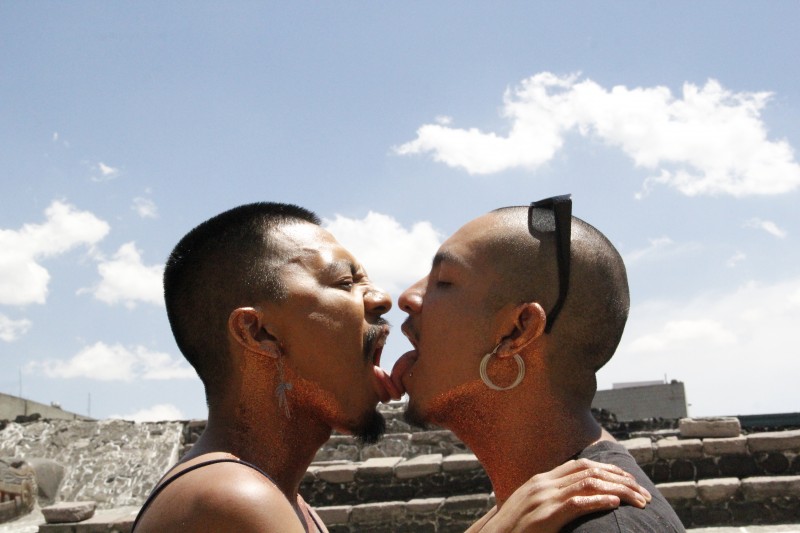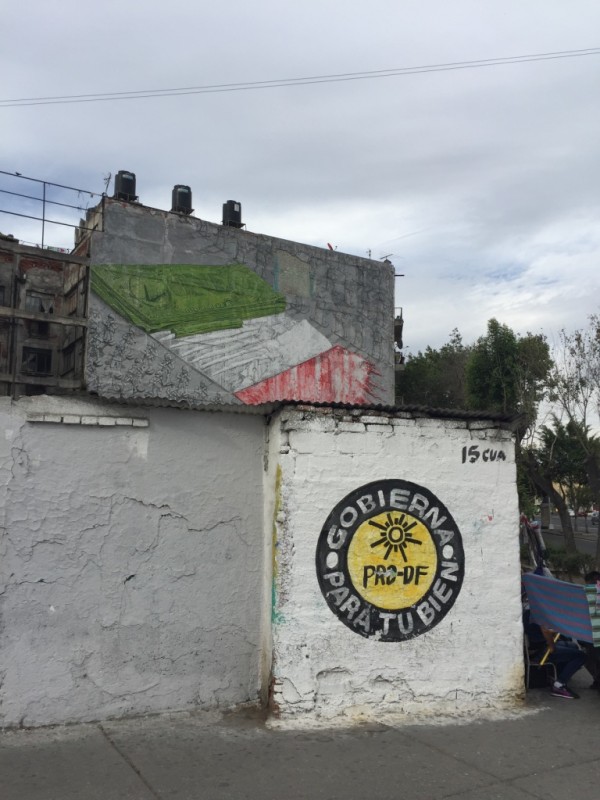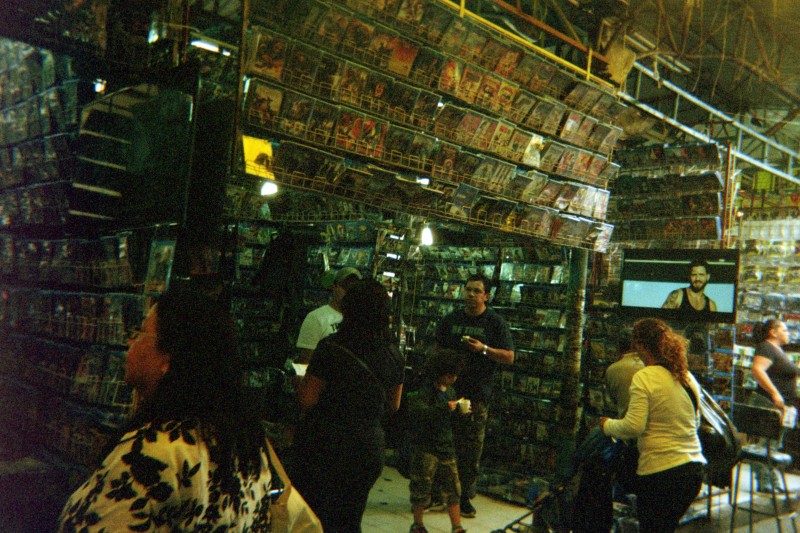Tepiteño Flow: Arteries of Consumption, Circulating Vernaculars
by Ariel Wind
This project aims to explore the neighborhood of Tepito, Morelos, Mexico City through the overlapping – and sometimes dialectical, other times one and the same – lenses of global circulating consumerism (e.g. ads, legal and illegal products) and strains of the local vernacular (e.g. speech, signs, religious iconography). The project will muse upon the existence of sensational writings about Tepito – primarily taken from El Universal and Proceso articles as well as Nota Roja periodicals – with photos I captured using disposable cameras in order to reflect on the general banality of the marketplace de abastos, of its quotidian and everyday practices. The use of hand-written notes and disposable cameras taps into the meta-practice of creating non-“auratic”, easily reproducible documentation of reproducible goods and advertisements. The central themes here of disposability and simulacra relate to the violent excess, the sheer number and movement of cheaply produced consumer and tourist merchandise. The project’s spatial axis is organized around the exploration of the “central vein” of Tepito – the tianguis that stretch and occupy much of the space of the neighborhood. These include Calle Granaditas, Avenida del Trabajo, and Jarciería, which are main foot and vehicle traffic paths, and the latter of which – along with Eje 1– have recently been the sites of tension between authorities and vecindarios; and El mercado de Tepito. Visits to El altar a la Santa Muerte and consideration of political activist and local artistic interventions will provide some theoretical foundations for local political and religious responses to Tepito’s socio-economic positioning in the schisms between safety and violence, the national and the local, and the institutional, the sui generis, and the (mass) mediated.
Mercado de Tepito
Queer Brown Presence In Indigenous Mexica Mythology
by Sebastian Hernandez

Throughout my education I have found a lack of acknowledgment within the Aztec indigenous mythology and Mexican/Chicano history of a representational queer body. The desired purpose of my creative project is to trace and make present the hidden or omitted queer brown body in the discourse of Meso American indigenous historical narratives through the production of photographic images. I have chosen Templo Mayor as my cite of inquiry in regards to a physical archeological evidence of the Mexica city of Tenochtitlan. Templo Mayor not only being a site of power and a physical marker of Mexica life but also as a site which can foster a queer space. I’ve collected documentation of archeological artifacts to look at the variety of Mexica/Aztec sculptures, specifically looking at the way these human sculptures were positioned by the artist. I will recreate these collection of poses at the site of Templo Mayor while a photographer will document the performance of the queer Mexica poses. More recently I have been talking to a Mexico City artist named Jovan Israel in regards to his experience in urban Mexico City and we share a lot of common experiences and thoughts as well as artistic style. He has agreed to collaborate with me on a performance piece titled “Brown Zero” at Templo Mayor which will be documented. I propose these images to serve as a contemporary archive as well as a building ground upon which queer Mexica people can continue harvesting a personal identity for years to come.


